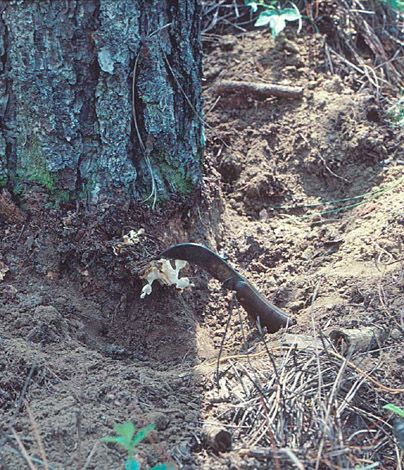Annosum root rot
Natural History

Conk growing just below the soil surface
Photo credit: G. Blakeslee - SFRC, University of Florida
Annosum root rot is a serious disease that affects trees throughout the United States but is most serious in the South and the West. Pine plantations on sandy soils in north Florida are generally high-risk areas. Annosum root rot can kill trees directly or it can weaken them and leave them more susceptible to wind damage and attack by bark beetles.
The disease is caused by a fungus (Heterobasidion annosum). This fungus produces shelflike mushrooms, called conks, that are tan to reddish brown on top and white or yellow underneath. The lower surface is covered with minute pores. Conks typically are produced at the base of the tree, often hidden from view by leaf litter. These conks produce spores that are released and carried by wind to newly cut stumps or wounds on trees. From there, the spores germinate and the fungus grows into the root system causing decay and infecting more trees as it spreads from tree to tree through root grafts and contact with other roots.
